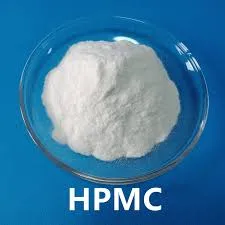
Oct . 02, 2024 17:13 Back to list
Properties and Applications of Hydroxyalkyl Cellulose in Various Industries
Understanding Hydroxyalkyl Cellulose Structure, Properties, and Applications
Hydroxyalkyl cellulose (HAC) is a versatile and widely used derivative of cellulose, known for its unique properties that cater to various applications across different industries. This water-soluble polymer is primarily produced by the reaction of cellulose with alkylene oxides, such as propylene oxide or ethylene oxide, which introduces hydroxyalkyl groups into the cellulose structure. The incorporation of these groups not only alters the solubility profile of cellulose but also enhances its functionality, making HAC a valuable ingredient in many formulations.
The primary structural characteristic of hydroxyalkyl cellulose is its hydrophilicity, which contrasts with the hydrophobic nature of native cellulose. This property permits HAC to dissolve readily in cold water, forming a clear, viscous solution. Molecular weight and the degree of substitution (the average number of hydroxyalkyl groups linked to the cellulose backbone) significantly influence the behavior of the polymer in solution. Higher molecular weights tend to increase viscosity, while different degrees of substitution can affect solubility and gel-forming capabilities.
One of the most significant applications of hydroxyalkyl cellulose is in the formulation of pharmaceutical products. Its ability to act as a thickening agent and stabilizer is crucial in suspensions, gels, and creams. HAC enhances the texture and consistency of these formulations while ensuring the uniform distribution of active ingredients. Moreover, its non-toxic nature and biocompatibility make it suitable for a wide range of pharmaceutical applications, including controlled drug delivery systems and topical preparations.
In the cosmetic industry, hydroxyalkyl cellulose is equally valued for its emulsifying and thickening properties
. It is commonly found in products such as lotions, shampoos, and conditioners, where it helps to maintain product stability and improve the feel on the skin or hair. Its ability to form a film on the skin also enhances product performance by creating a moisturizing barrier that locks in hydration.hydroxyalkyl cellulose

Additionally, hydroxyalkyl cellulose is extensively utilized in the food industry as a food additive. It can serve as a thickener, stabilizer, or gelling agent in various food products, from sauces and dressings to baked goods. HAC’s ability to improve texture and mouthfeel makes it a popular choice among food manufacturers trying to achieve the perfect balance of consistency and flavor.
The versatility of hydroxyalkyl cellulose extends to the construction and paint industries as well. In construction, it is used as a thickener in plasters, tile adhesives, and cement-based systems, where it provides rheological control, improving workability and adhesion. In paints and coatings, HAC enhances the viscosity and stability of formulations, ensuring that pigments remain uniformly distributed and that the finished product has an optimal application consistency.
Moreover, the growing interest in sustainable materials has propelled the use of hydroxyalkyl cellulose in biodegradable and eco-friendly formulations. As a natural polymer derived from cellulose, HAC presents a more environmentally friendly alternative to synthetic thickeners and stabilizers.
In conclusion, hydroxyalkyl cellulose is a remarkable polymer that exemplifies the intersection of natural materials and modern applications. Its unique structure contributes to a diverse array of properties that make it invaluable across multiple sectors, from pharmaceuticals and cosmetics to food, construction, and paints. As research continues to explore its potential and expand its applications, hydroxyalkyl cellulose stands out as a key ingredient in innovation, sustainability, and the development of new, efficient formulations for everyday use. Its adaptability and functionality ensure that it will remain a crucial component in industries seeking to enhance product performance while embracing environmental responsibility.
-
Versatile Hpmc Uses in Different Industries
NewsJun.19,2025
-
Redispersible Powder's Role in Enhancing Durability of Construction Products
NewsJun.19,2025
-
Hydroxyethyl Cellulose Applications Driving Green Industrial Processes
NewsJun.19,2025
-
Exploring Different Redispersible Polymer Powder
NewsJun.19,2025
-
Choosing the Right Mortar Bonding Agent
NewsJun.19,2025
-
Applications and Significance of China Hpmc in Modern Industries
NewsJun.19,2025







